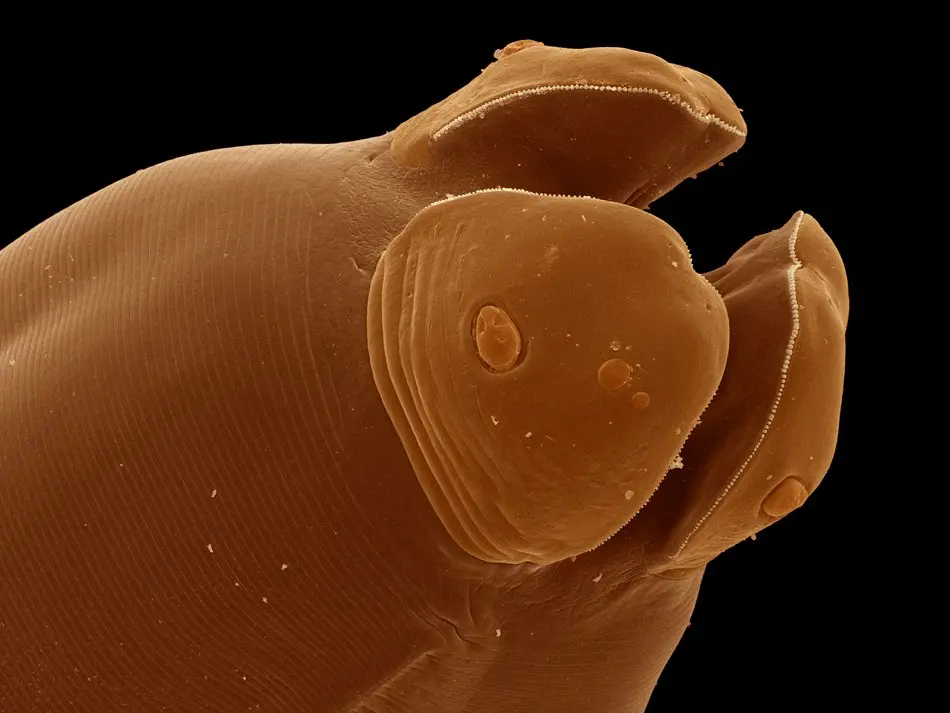by Dr. Julie Hopper, LABS Facilitator
(This post originally appeared on Dr. Hopper’s website. It has been reposted with permission.)
This weekend I had the awesome opportunity to spread my enthusiasm for parasites with middle schoolers at a science workshop through the LABS program at The Institute for Educational Advancement (IEA) in Pasadena, CA.

IEA in Pasadena, CA, is an inspiring non-profit organization, that helps to identify and foster the individual talents and abilities of gifted students from all backgrounds, and works to serve and support them and their families. It was super neat to interact with these students and to reflect on the world of parasites with them.
My main learning objectives for the students in the workshop were to: 1) Define different types of ecological relationships, including the different types of symbiotic relationships; 2) differentiate among parasites, parasitoids and pathogens; 3) get acquainted with different parasite lifestyles- including direct transmission, vectored transmission, trophic transmission, parasitic castrators, host behavior modification, etc. 4) revel in the sheer shock and aw of diverse parasites; 5) become familiar with using microscopes; and 6) gain experience with some basic dissection techniques.
I found some super awesome and educational parasite videos during the process of getting my interactive lecture together-including videos of:
The tongue-eating parasitic isopod of fish
The sexual parasitism of the female deep sea anglerfish by the male deep sea angler fish
And of course parasitic wasp larvae developing inside of their host caterpillar:
This was also a great opportunity to become more acquainted with local parasitologists and the common parasites and hosts in the Los Angeles area. This meant connecting with my local parasitologist colleagues (many of whom are part of the Southern California Society of Parasitologists) and finding some parasite ‘hot-spots’ so that I could bring in ample numbers of snails, crabs, shrimp and protozoans for some hands-on activities including dissections and mounting slides on the microscope.
Below was one of the students’ favorites – the parasitic isopod couple (yes.. male and female showing their love for each other all while parasitizing the host shrimp). ‘Couples that parasitize hosts together.. stay together!.. awww’
They were also amazed by the marine protistan parasitoid Parvilucifera sinerae, that they happened to catch in the act of bursting out of its dinoflagellate host (and thus killing its host!). I am particularly fond of this parasitoid right now.. since I’m working with marine plankton communities every day at USC. You can read about some of my current postdoc work here

This event reminded me that one of the main reasons why I love science is actually the amazing support from other scientists.. and getting to know these scientists as people! For instance, I could not have done this workshop, without the support of Dr. Kevin Lafferty (USGS, UCSB) and Dr. Ryan Hechinger (Scripps-UCSD) who provided me with some hot spot localities for collecting highly-parasitized populations of the California Horn Snail, and how to access those hot-spots. These snails are parasitized by many different species of trematodes (Platyhelminthes), which are trophically transmitted parasites. This means that these parasites use multiple hosts to complete their life cycle and thus require their first set of hosts to be eaten by their final ‘definitive’ host. These parasites are also great for show-and-tell purposes since the cercariae (parasitic stage that searches for the next host) are larger than 100 um, move around quite a bit and can often have charismatic features, such as eye-spots.
I also got more great advice from Dr. Kimo Morris, a Professor at Santa Ana Community College and Dr. Ralph Appy regarding what other critters I could collect, and how to alter my workshop and lectures to appropriately target middle schoolers. Dr. Ralph Appy actually invited me to his laboratory to learn how he digests crabs and shrimps with an acidic solution to fool the parasites (in these hosts) into thinking that they are in the stomach of the next host of their life-cycle.. with the ultimate goal of collecting the parasites into a pool of liquid for research or show-and-tell. Dr. Ralph Appy provided me with a ton of ghost shrimp, mole crabs (sand-crabs) and the really cool mud shrimp that was parasitized by two ectoparasitic isopods (one female and one male).
All in all… I definitely learned a ton from this great opportunity.. and look forward to giving another parasitology workshop to K-12 students in the future (next time with fresher snails.. so they don’t smell so bad!).
Interested in participating in LABS workshop? Learn more and register for the next one on the LABS webpage.





